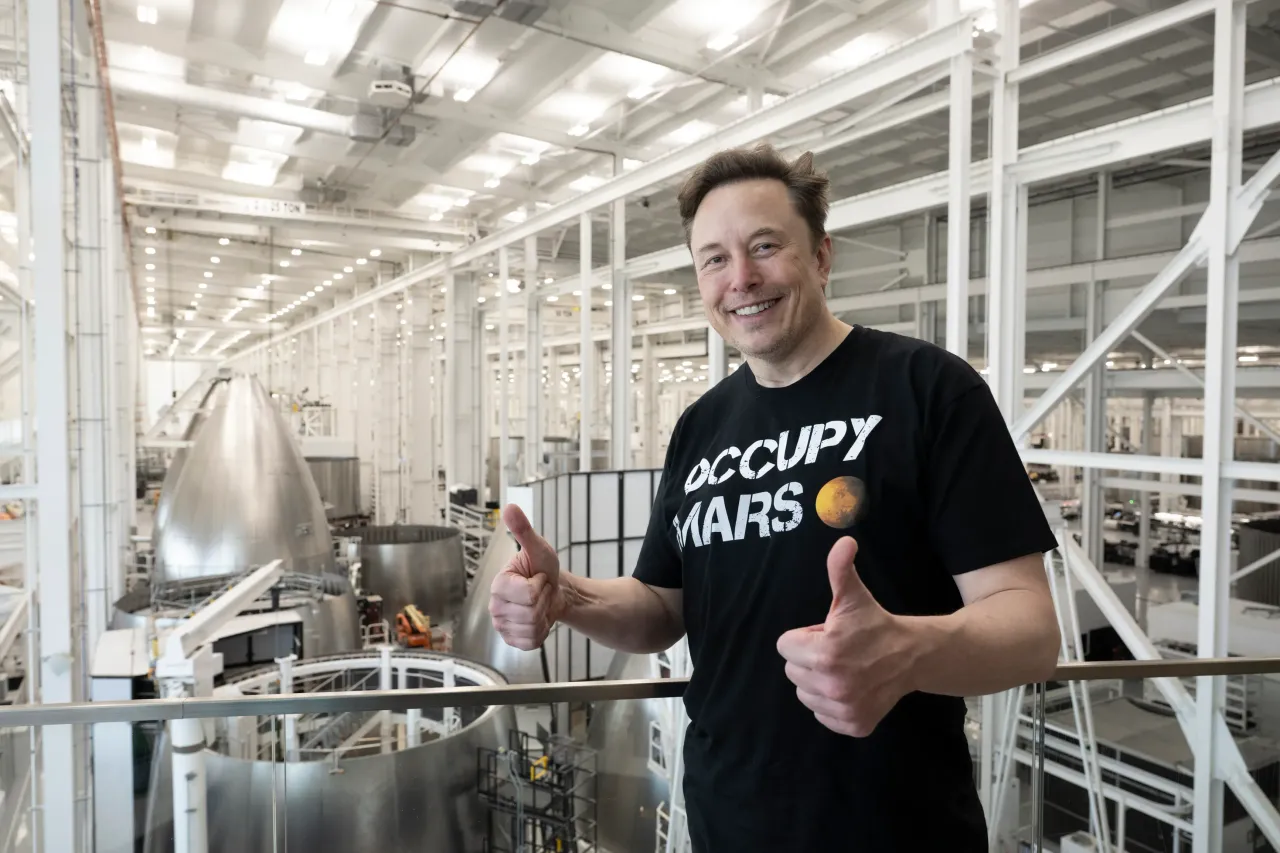Advertisement|Remove ads.
Elon Musk Has An Out-Of-The-World Solution For Solving AI Power Crisis: Space-Based Computing

- Power demand from AI data centers in the United States could grow more than thirtyfold, reaching 123 GW, up from 4 GW in 2024.
- “My estimate is that the cost effectiveness of AI in space will be overwhelmingly better than AI on the ground, far long before you exhaust potential energy sources on Earth.” — Musk
- The Tesla chief said that solar cell production for terrestrial applications is already far above the number that Starship could deliver to space.
Elon Musk, the billionaire CEO of Tesla and SpaceX, said on Wednesday that AI computing in space will be much more cost-effective than on Earth and shared a roadmap for achieving it.
The SpaceX CEO said on X that the firm’s giant launch vehicle, Starship, should be able to deliver around 300 gigawatts (GW) per year of solar-powered artificial intelligence satellites into orbit. The number could reach 500 GW, he added.
“Average U.S. electricity consumption is around 500 GW, so at 300 GW/year, AI in space would exceed the entire U.S. economy just in intelligence processing every 2 years,” he said.
Big Tech’s Power Demand
Deloitte analysts estimated that by 2035, the power demand from AI data centers in the United States could grow more than thirtyfold, reaching 123 GW, up from 4 GW in 2024. The Deloitte report also warned that the AI ambitions of the U.S. government and the industry could even struggle to connect their data centers to the grid.
Top executives in the AI industry have all raised alarms about an impending crisis, with some suggesting that these concerns can be addressed by moving data centers into space. During a conversation with Nvidia CEO Jensen Huang at a U.S.-Saudi summit on Wednesday, Musk said that space-based AI computing could be achievable by the end of the decade.
“My estimate is that the cost effectiveness of AI in space will be overwhelmingly better than AI on the ground, far long before you exhaust potential energy sources on Earth,” Musk said. “Long, long before, meaning I think even perhaps in the four or five year timeframe, the lowest cost way to do AI compute will be with solar-powered AI satellites. So I’d say not more than five years from now.”
In support of his argument, the Tesla chief said that solar cell production for terrestrial applications is already far above the number that Starship could deliver to space. He added that chip production will be “the major piece of the puzzle to be solved” and emphasized that Tesla Terafab, a giant semiconductor production facility, will address it.
Retail sentiment on Stocktwits about SpaceX rival Rocket Lab was in the 'bullish' territory at the time of writing.
When Is Starship Launching Next?
According to an internal SpaceX document seen by Politico, the firm is aiming at June 2026 for the first orbital refueling demonstration between Starship vehicles and an uncrewed lunar landing in June 2027. The delays would likely push NASA’s crewed mission to the Moon to 2028, a year behind schedule.
SpaceX’s Starship last flew in October, during which it met most of its mission goals. While the company has not specified on which date it will launch next, a SpaceX official suggested the giant rocket could be ready to launch from Texas in January.
For updates and corrections, email newsroom[at]stocktwits[dot]com.












/filters:format(webp)https://news.stocktwits-cdn.com/large_Getty_Images_2226707555_jpg_caa2d3d6c1.webp)
/filters:format(webp)https://st-everywhere-cms-prod.s3.us-east-1.amazonaws.com/shanthi_v2_compressed_98c13b83cf.png)
/filters:format(webp)https://news.stocktwits-cdn.com/large_Getty_Images_2238160824_jpg_d18c8fe07a.webp)
/filters:format(webp)https://news.stocktwits-cdn.com/IMG_8805_JPG_6768aaedc3.webp)
/filters:format(webp)https://st-everywhere-cms-prod.s3.us-east-1.amazonaws.com/large_eli_lilly_logo_resized_9e8a8a2333.jpg)
/filters:format(webp)https://st-everywhere-cms-prod.s3.us-east-1.amazonaws.com/large_spacex_resized_1a60365b45.jpg)
/filters:format(webp)https://news.stocktwits-cdn.com/Getty_Images_2236688965_jpg_a4128185a6.webp)
/filters:format(webp)https://news.stocktwits-cdn.com/large_Getty_Images_2240543047_jpg_e85342bcd4.webp)